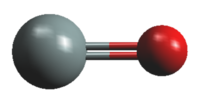|
The data set has been greatly extended with respect to
the first entry from December 2000. The fit and the data set
have been described in
(1) H. S. P. Müller, S. Spezzano, L. Bizzocchi, C. A.
Gottlieb, C. Degli Esposti, and M. C. McCarthy,
2013, J. Phys. Chem. A 117, 13843.
Additional rotational data were taken from
(2) M. E. Sanz, M. C. McCarthy, and P. Thaddeus,
2003, J. Chem. Phys., 119, 11715;
from
(3) R. Mollaaghababa, C. A. Gottlieb, J. M. Vrtililek,
and P. Thaddeus,
1991, Astrophys. J. 368, L19;
and from
(4) S.-H. Cho and S. Saito,
1998, Astrophys. J. 496, L51.
Infrared transitions were also used in the fit. These
were reported by
(5) F. J. Lovas, A. G. Maki, and W. B. Olson,
1981, J. Mol. Spectrosc. 87, 449;
and by
(6) J. M. Campbell, D. Klapstein, M. Dulick, P. F. Bernath,
and L. Wallace,
1995, Astrophys. J. Suppl. Ser. 101, 237.
Predictions with uncertainties larger than 300 kHz
should be viewed with some caution.
The partition function is fully converged up to 1000 K;
some extrapolation is possible.
The equilibrium dipole moment and its first order vibrational
correction was taken from
(7) J. W. Raymonda, J. S. Muenter, and W. A. Klemperer,
1970, J. Chem. Phys. 52, 3458.
The latter value was scaled with the ratio of the
appropriate power of the reduced mass, as was done for the
first order rotational correction (5.95 μD)
derived from Einstein A values of the main isotopolog
reported in
(8) E. J. Barton, S. N. Yurchenko, and J. Tennyson,
2013, Mon. Not. R. Astron. Soc. 434, 1496;
see documentation file for the main isotopolog, e044505.cat.
|
